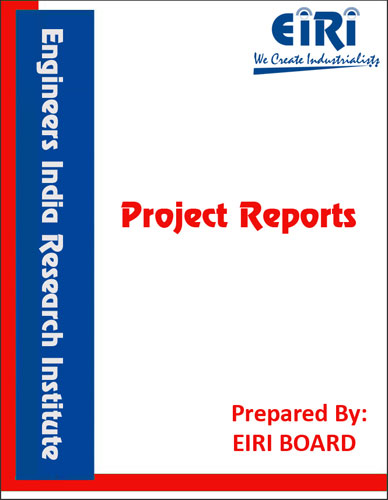The project report includes Present Market Position and Expected Future Demand, Market Size, Statistics, Trends, SWOT Analysis and Forecasts. Report provides a comprehensive analysis from industry covering detailed reporting and evaluates the position of the industry by providing insights to the SWOT analysis of the industry.
A perfume can be defined as a blend of odourous materials of natural and synthetic origin which gives a pleasant odour impression.
The art of perfumery is of extreme antiquity. The perfumes have been used from time to time memorial and have played an important part in daily life of the people. The idea of perfumes was first conceived and technically employed in the East, especially in India, China, Egypt and persia. The fermes of fragrance and might giving light odours were employed in religion ceremonies and later on balsams, pomades and cosmetics began to serve the needs of mankind.
Progress in the creation of natural perfume industry was made gradually. The first manipulation of perfumes was as therapeutic remedies utilizing immediate resources of nature. Then as time passed on and the experience of mankind accumulated, they became the basis of secular employment of incense. The latter established the art of perfumery.
Unfortunately, the flourishing position which India had attained in olden times and medieval periods dwindled down due to the lack of scientific knowledge and the inability of Indian manufacturers to adopt them to modern scientific advancements. The application of cheap synthetic perfumes in the manufacture of soaps, cosmetics and confectionary etc. induced Indian perfumes to import and methods of production could not compete with the modern scientific equipments and process. Therefore, improvements in the existing equipments and process are to be introduced early to develop the present state of perfumery industry in the country.
While the numbers of natural and synthetic perfumery chemicals are limited, that of possible complexes is very large. Modern perfumes are developed to satisfy varied tastes. The technical requirements of a perfume are harmonius, lasting quality and deffusiveners. A harmoneous progression of evaporation of the odourous components is achieved by blending compatible principles. The perfume must have a sustained or lasting quality when applied on the skin and it must permeat or diffuses into the space surrounding the exposed area.
Aromatics of different volatility are employed in compounding perfumes and on this basis, aromatics may be classified into three groups:
i. Group A consists of highly voltaile compounds.
ii. Group C, Consists of compounds which are least volatile.
iii. Group B, consists of compounds where volatility lies in the intermediate range. Top notes are selected from Group A, blending agents and modifiers from the Group B and end notes from Group C. The number of aromatic raw materials used in the perfumery industry is 50 immense that classification becomes a matter of practical as well as theoretical interest. The perfumer creates a new perfume in three possible ways:-
a. Produces a natural scent.
b. Modifies a natural floral scent for or combines several floral characters.
c. Creates a fancy perfume.
These require on the part of perfumer a good command of the imitation technique, keen sense of factory observation, comprehensive knowledge of compounding ingredients and creative imagination. There are a number of formulations which are formulated by the perfumers. These are known as Fancy Bouquet and “Royal Bouquet”. A number of fancy perfumes are produced branded with different names.
INTRODUCTION
PROPERTIES AND USES
B.I.S. SPECIFICATION
MARKET POSITION
PERFUME MARKET
DETAILED EXPORT DATA OF EAU DE PERFUME
MANUFACTURERS/SUPPLIERS/EXPORTERS
LIST OF TOP PERFUME BRANDS IN INDIA
FORMULATION AND PROCESS OF JASMINE PERFUME
PROCESS OF MANUFACTURE
PROCESS OR PREFIXATION IN DETAIL
PROCESS FLOW DIAGRAM FOR JASMINE PERFUME
FORMULATION AND PROCESS OF ROSE PERFUME
PROCESS FLOW DIAGRAM FOR ROSE PERFUME
FORMULATION OF LAVENDER PERFUME WITH PROCESS
PROCESS FLOW DIAGRAM FOR LAVENDER PERFUME
FORMULATION AND PROCESS OF LILLY PERFUME
PROCESS FLOW DIAGRAM FOR LILLY PERFUME
PREPARATION OF THE MATERIALS
OTHER FORMULATIONS OF PERFUME
SUPPLIERS OF PERFUMES/SCENTS MACHINERY
SUPPLIERS OF RAW MATERIALS
APPENDIX – A:
1. COST OF PLANT ECONOMICS
2. LAND & BUILDING
3. PLANT AND MACHINERY
4. FIXED CAPITAL INVESTMENT
5. RAW MATERIAL
6. SALARY AND WAGES
7. UTILITIES AND OVERHEADS
8. TOTAL WORKING CAPITAL
9. COST OF PRODUCTION
10. PROFITABILITY ANALYSIS
11. BREAK EVEN POINT
12. RESOURCES OF FINANCE
13. INTEREST CHART
14. DEPRECIATION CHART
15. CASH FLOW STATEMENT
16. PROJECTED BALANCE SHEET



